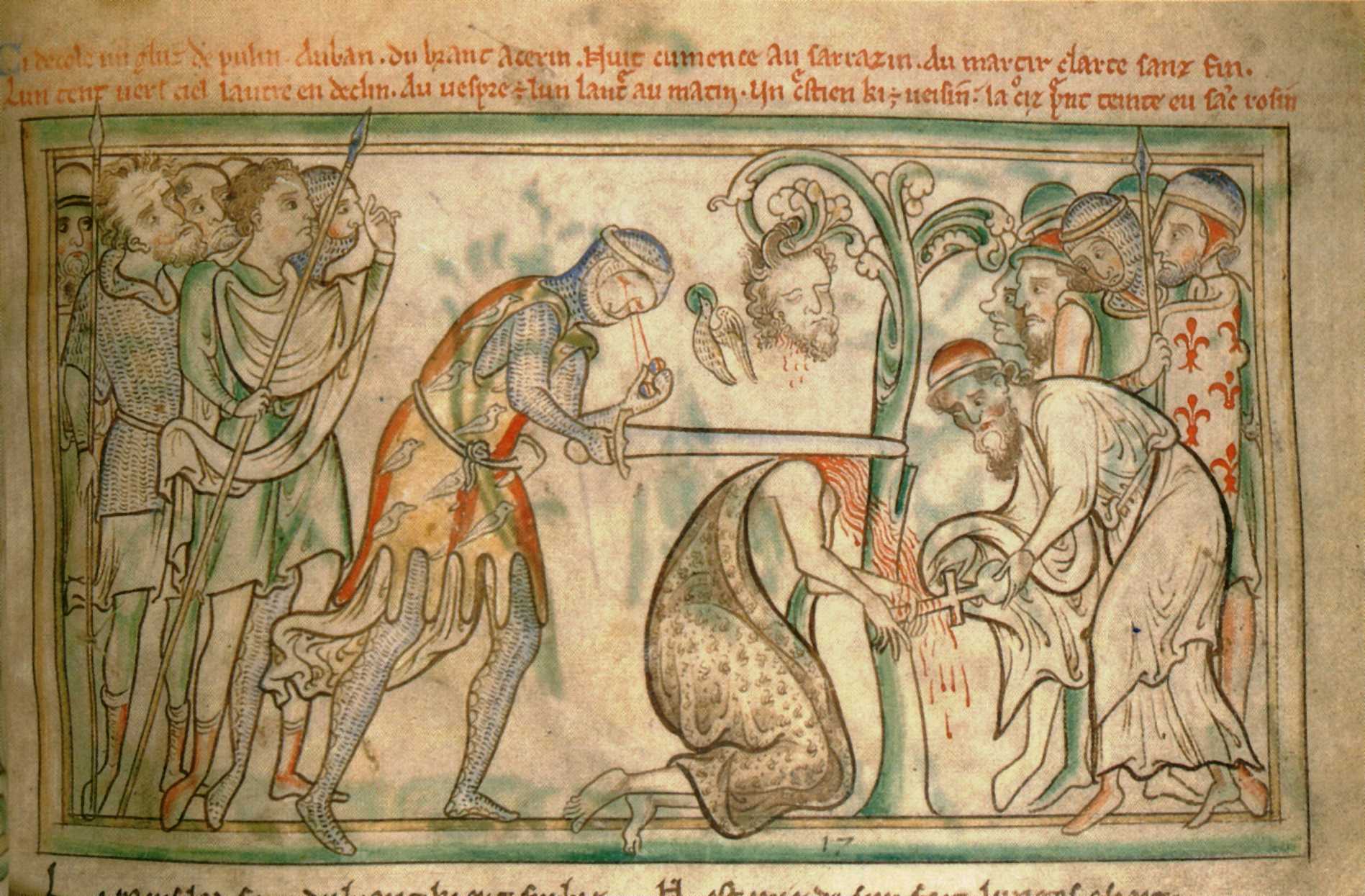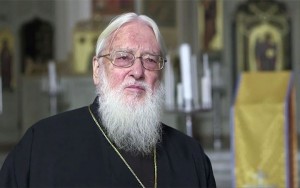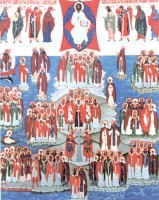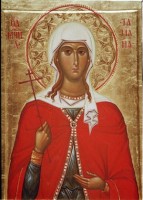Today we celebrate the memory of St. Alban, Protomartyr of Britain.
According to recent findings, St. Alban has been shown to be not only the protomartyr of Britain, but also the earliest martyr of Latin Europe of whom we know.
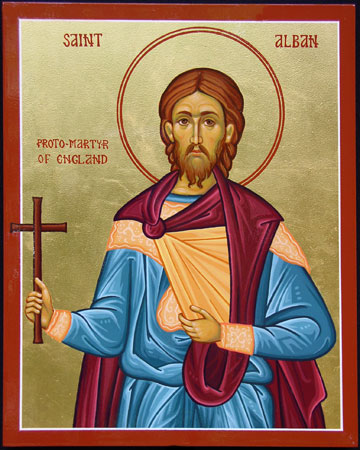 Based on the eighth-century account of the Venerable Bede, hagiographers have placed St. Alban’s martyrdom in the early fourth century, during the fierce Diocletian persecutions. However, in a guide to St. Alban’s Cathedral, built over the site of his martyrdom, we find the following interesting information that, according to the work of Dr. John Morris of London, places the date of execution nearly a century earlier, to June 22, 209:
Based on the eighth-century account of the Venerable Bede, hagiographers have placed St. Alban’s martyrdom in the early fourth century, during the fierce Diocletian persecutions. However, in a guide to St. Alban’s Cathedral, built over the site of his martyrdom, we find the following interesting information that, according to the work of Dr. John Morris of London, places the date of execution nearly a century earlier, to June 22, 209:
“The search for the source on which Gildas, about 540, and thence Bede, about 700, drew for their accounts of the martyrdom was rewarded by the discovery in 1901 of a copy in Turin of Constantius’ life of St. Germaine, originally written in about 480…. Constantius gives the day of St. Alban’s execution as June 22nd, but not the year. He does, however, state that the Roman Emperor involved was Septimus Severus, and says: ‘Then the emperor Severus went to Britain… When it became clear that there were very many Christians there, with his customary fury he ordered them all to be put to the sword.’ Gildas, copying from this, apparently read ‘Severus’ as an adjective, and, in a gloss, supposed the emperor was the notorious anti-Christian, Diocletian. Bede omitted the ‘supposed’ and incorporated the gloss in the text and so the Diocletian dating became established.”
“In any case, Dr. Morris points out, it couldn’t have been in that emperor’s time, because he ruled only in the East. Maximilian ruled the West of the empire and under him Constantius was responsible for Spain, Gaul and Britain. His wife, Helene, was a Christian. A contemporary account emphatically states that while this Caesar ‘showed willing’ by knocking down a few meeting places of the Christians, he killed none.
“Returning now to Severus: he was in England from the summer of 208 till his death in 211. He had his wife and two sons with him. In 209 he went north with the elder son to deal with the Caledonians, leaving his youngest son Geta Caesar in charge of Britain for three or four months till his return. The Turin MS says that after St. Alban’s death, ‘Then the evil Caesar, aghast at such wonders, ordered the persecutions to end, without the orders of the emperors, setting down in his report that the religion actually prospered from the slaughter of the saints…’ To this baffling passage Morris offers the solution that the evil Caesar was in fact the acting one Geta, and so confidently places the martyrdom on June 22, 209.”
This same “Guide” also states that St. Alban “was almost certainly a high-born native of Verulamium who had probably held military rank, privileged with Roman citizenship in the same way as was the Jew, St. Paul of Tarsus.”
Enlightened by this piece of brilliant research, we shall continue with the life of the saint, quoting from Saints of the British Isles by A. Bond and N. Mabin:
“Whilst this persecution was raging, St. Alban, a resident of Verulam (now known as Saint Albans), was still a pagan. Nevertheless, when the priest Amphibalus sought his help he freely gave it. The holy priest was being pursued by the persecutors and Alban gave him a hiding place. Such was his faith that even at this time of stress Amphibalus never ceased to praise his God. Alban was converted by this example of a holy life and began to imitate it by the Grace of God. Thus it happened that, on seeing this, the priest instructed Alban in the Faith.
“After a few days it came to the ears of the civil government that Saint Alban was sheltering a fugitive in his home. Soldiers were sent to search the house. On their arrival they were met by Saint Alban, who was wearing the robes of the priest and thus the soldiers conveyed Saint Alban to the judge. It so happened that the judge was offering a sacrifice to the idols when the saint was brought before him. When he saw Saint Alban in the priestly attire, he was enraged, for he recognized the captive and realized that the priest had been permitted to escape. Even so, because of Saint Alban’s position and his former loyalty to the Empire and the Roman deities, the judge tried to be lenient. He offered Saint Alban freedom if he would offer the sacrifice. This the saint steadfastly refused to do. Saint Alban declared himself to be a Christian, and feared not the threats of the civil authorities. He so incensed the judge by his boldness and zeal that Saint Alban was ordered immediately to be taken and scourged. By the beating, the judge hoped for a submission to the Roman civil authority, since his words had not prevailed. Even the most cruel tortures did not shake Saint Alban’s faith and, on seeing this, the judge ordered him to be put to death.
“As Saint Alban was led out of Verulam, by Divine instinct all the townspeople followed him, leaving the place deserted and the judge alone. The people, knowing what was to happen, attempted to help the saint by pulling down the bridge over which he was to pass, which spanned the river dividing the town from the place of execution. This bridge crossed over a very fast-flowing river that had too rapid a course to allow a ford. The desire now came upon Saint Alban to meet his Lord soon and thus he stood on the riverbank and, looking towards Heaven, he prayed for help. At once the river dried up and Saint Alban was able to pass over on dry land. The executioner who accompanied him was so overcome by this wonder that he threw his sword down and begged to be allowed to suffer with, or in place of, the prisoner. Thus his role changed from persecutor to companion in the Faith. His fellow executioners hesitated at this and so Saint Alban went on alone to the top of Holmhurst Hill, where he prayed for water. Forthwith a spring appeared from out of the ground, and the river that had dried up returned to its natural course, as a testimony of its obedience.
“Here it was that the martyr’s head was severed from the body and he received the crown of life that is the promise of God. He who struck the final blow was not to look upon the martyr’s holy body because, in recompense for his deed, his eyes dropped out and fell to the ground. The soldier who had cast down his sword suffered at the same time. Of him it is true to say that he was surely baptized in his own blood and thereby rendered worthy to enter into the Kingdom of Heaven. Convinced by the signs and miracles accompanying the death of Saint Alban, even the judge came to honor the martyred Christian and so afterwards ordered the cessation of the persecution Of Christians…
“Very soon after his death the remains of St. Alban were buried in a church built on the site of his martyrdom. Saint Germain, Bishop of Auxerre in Gaul, whilst on a visit to Britain in 429 in order to quell the heresy of Pelagianism, is recorded as praying at the shrine of the saint. Great must have been his devotion to Saint Alban, for he caused a church in his own diocese to be dedicated in the Saint’s honor.
“The site of martyrdom can still be seen today, although sadly, due to the ravages of Protestantism, the precious relics are now lost.”












